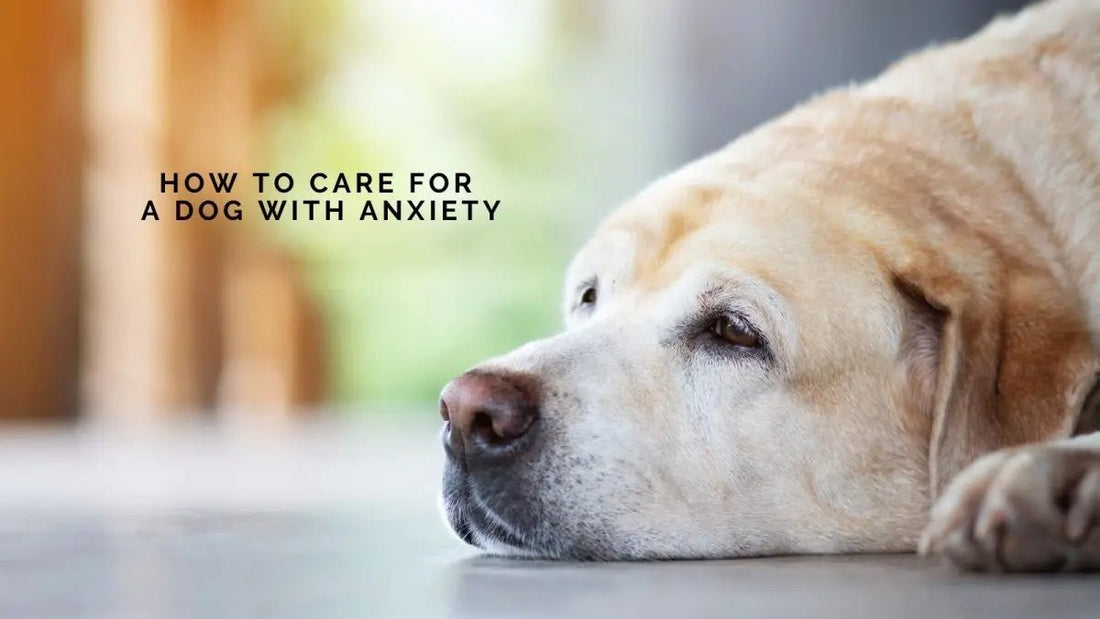
How to Care for a Dog with Anxiety
Share
How to Care for a Dog with Anxiety
Dogs, like humans, can experience anxiety, and as pet owners, it’s our responsibility to help them feel safe and secure. Anxiety in dogs can manifest in various ways, from excessive barking and destructive behaviour to trembling, panting, or even withdrawal.
Understanding Dog Anxiety
Dog anxiety can stem from different sources, including:
Separation Anxiety – Many dogs struggle with being left alone and may engage in destructive behaviours.
Noise Phobia – Fireworks, thunderstorms, and even household appliances can trigger fear responses.
Past Trauma or Neglect – Rescued or formerly abused dogs may carry emotional scars.
Changes in Environment – Moving to a new home, introducing new pets, or changes in routine can cause distress.
Signs of Anxiety in Dogs
It’s important to recognize anxiety symptoms early so you can intervene effectively. Look for:
Excessive barking, whining, or howling
Destructive chewing or scratching
Pacing or restlessness
Trembling or excessive panting
Accidents indoors despite being house-trained
Hiding or avoiding interaction
How to Help Your Anxious Dog
Create a Safe Space
Dogs with anxiety benefit from having a designated space where they feel secure. A quiet room, crate, or cosy corner with their favourite blanket and toys can help them feel safe.
Exercise and Mental Stimulation
Regular exercise is a natural stress reliever for dogs. Daily walks, playtime, and interactive toys can help channel their energy and reduce nervousness. Puzzle feeders and scent games provide mental enrichment to keep their minds engaged.
Consistent Routine
Dogs thrive on routine, and sudden changes can increase their anxiety. Keep feeding times, walks, and bedtime consistent to create a predictable environment.
Calming Techniques and Products
Consider:
Thundershirts or Anxiety Wraps – These snug-fitting garments provide a calming effect similar to a gentle hug.
Aromatherapy – Lavender and chamomile essential oils (dog-safe formulations) can promote relaxation.
Music or White Noise – Soft music or white noise can mask external sounds that might trigger fear.
Behavioral Training and Desensitization
Gradual exposure to anxiety triggers, combined with positive reinforcement, can help desensitize your dog. For example, if your dog is afraid of being alone, start with short departures and gradually increase the time.
Natural and Veterinary Treatments
CBD Oil or Supplements – Some natural supplements, like valerian root or melatonin, can have calming effects. Always consult your vet before introducing new treatments.
Prescription Medications – In severe cases, your veterinarian may recommend anti-anxiety medications to help your dog cope.
Professional Help
If your dog’s anxiety is severe or unmanageable, consider working with a professional dog trainer or animal behaviourist. They can tailor training techniques to your dog’s specific needs.
Anxiety in dogs is a manageable condition with the right approach, patience, and care. By recognizing the signs and taking proactive steps, you can help your furry friend feel more comfortable and confident. Every dog is unique, so it may take some time to find what works best. The key is to provide love, reassurance, and a structured environment to help them thrive.
Do you have a dog with anxiety? Share your experiences and tips in the comments below!